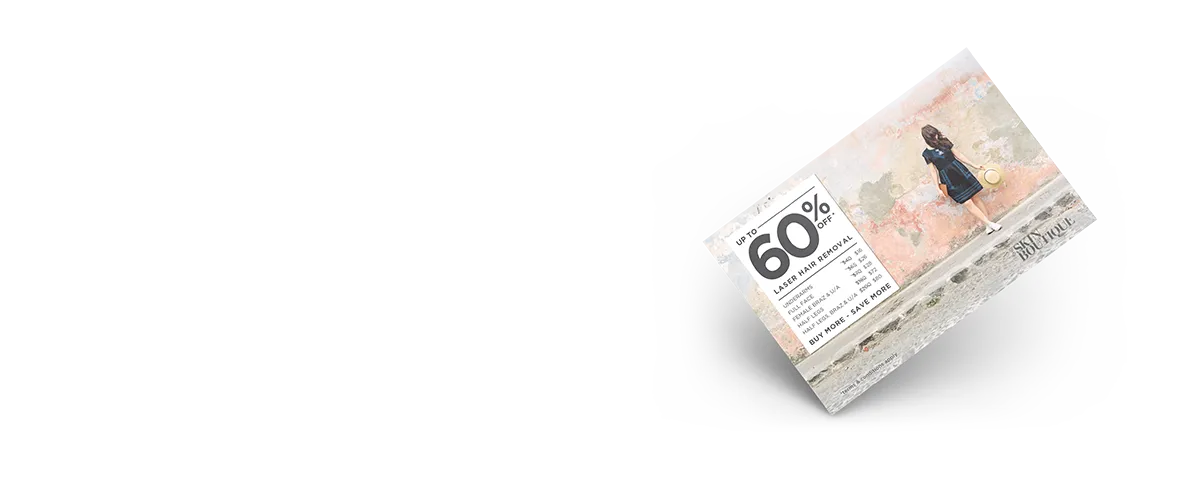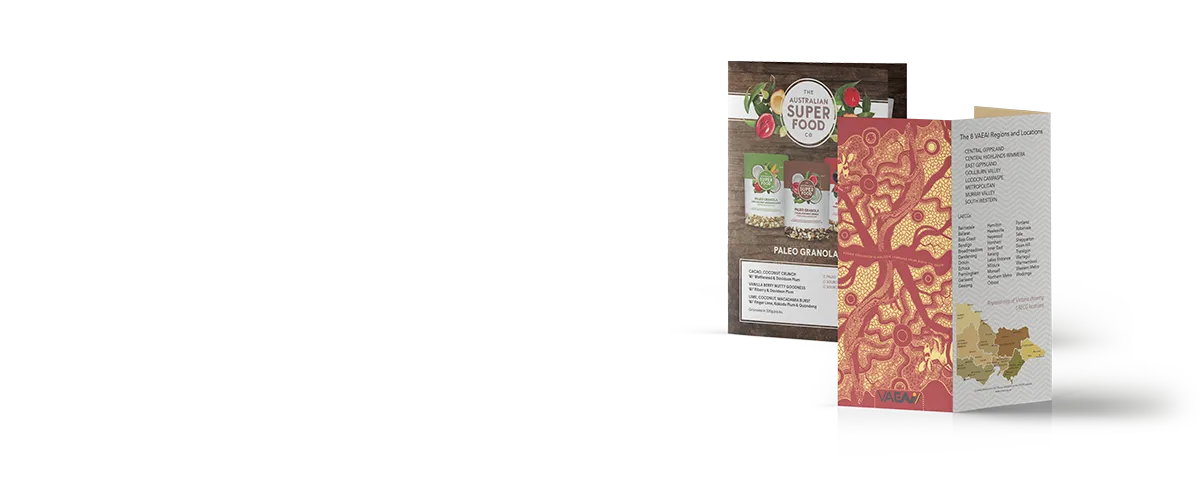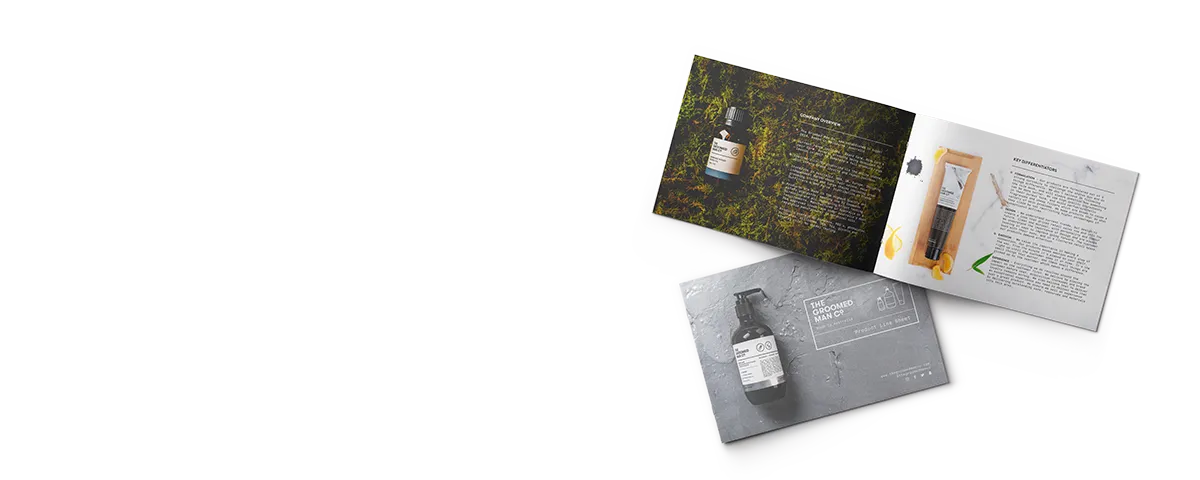Printing Flyers: How to Get Good Quality Flyers Made
What is a Flyer?
Typically, a flyer is a flat sheet of paper that doesn’t have folds. It’s used to draw people’s attention to a product, service or upcoming event. What’s displayed is usually a simple message – devoid of lengthy sentences or paragraphs – and often complemented by eye-catching images or visuals. The content can be printed on either one side or both sides of the flyer, but you gain extra room to communicate and promote something when you print flyers with double-sided content.
Flyers are sometimes also referred to as pamphlets or leaflets. Although the terms are practically interchangeable, in general, a pamphlet is a type of flyer that’s commonly made of glossy paper. A leaflet, on the other hand, is a thinner flyer that can be easily placed under doors, inside mailboxes or against windscreens of vehicles. Whichever the term is used, the main goal of this format is to reach out to as many people as possible in the real (offline) world. Flyers are meant to end up in as many hands as possible and spark people’s interest as they read what’s there.

Difference between a Flyer and a Brochure
The main difference between a flyer and a brochure is their appearance in their final form. Flyers come as a single, flat sheet without any folds. A brochure also comes as one sheet but is typically folded in half or in three.
A brochure has content printed on both sides. And due to its structure having multiple folds, these folds serve as separate panels or sections of information. That is why unlike with flyers, are created to provide more details than flyers do. Think about the way a website has a separate page for products and services, one for the history of the company and founders, one for contacting them over the phone or by visiting their stores. A brochure would similarly incorporate those kinds of divisions.

Difference between a Flyer and a Booklet
A booklet, on the other hand, is like multiple sheets of a flyer stapled or stitched together. This binding at the edge is what makes it different from a brochure. With booklets, you can only turn to the next page like you would with any other book, and you can’t ‘expand’ the booklet into a single, flat state the way you can with brochures. A booklet is particularly useful for presenting a series of things like products, speakers at a conference or tourist attractions in a city.
Booklets and brochures are generally made of a heavier weight, higher quality paper than flyers are. They’re designed to be sturdier as they contain more valuable information for customers, particularly those who may have already expressed an interest in the product, service or event being promoted. Therefore, they have to look even more professionally done and a little bit more money is needed for that.

Stock Types for Flyer Printing
Coated Artboard
This is the thickest stock type in the list. It works for producing a sturdy flyer that’s less prone to getting torn or crumpled easily. Think of a high quality business card and how it feels when you hold it – it’s similar to the artboard stock.
Gloss
Choose this stock type if you’re aiming to show images or graphics with colours that pop out from the flyer. Just like photographs when they get printed from a camera shop, a glossy flyer tends to shine when light strikes it.
Recycled
As the name suggests, this type is made from 100% recycled paper material and is also uncoated. The flyers you can produce here have a wide range of thickness to select from (between 140 and 350 gsm).
Silk
The paper used here normally has a silky smooth finish. It’s an ideal type for light to medium flyers, whereas the coated artboard is for thick, more rigid flyers.
Uncoated
Standard uncoated paper, unlike the three stock types above, does not have a ‘sealing’, hence it’s more porous. More ink gets absorbed into the material, which is why printed images tend to look less crisp. That means you may want to use uncoated paper for flyers that are more text-based, or for your flyers to have a softer, raw paper look and feel.
Other Factors When You Print Flyers
Size
Think of the standard paper size for office documents, A4. Many flyers out there are smaller than that, and here’s an official list of flyer printing sizes.
A4 (210mm X 297mm)
A5 (148mm X 210mm)
A6 (105mm X 148mm)
DL (210 X 99mm)
Note that specifically, DL (which stands for ‘dimension lengthwise’) is exactly one-third the size of A4. It’s a standard size of personal envelopes.
Printed Sides
Flyers can be made with either one-sided or double-sided printing. However, it’s worth thinking about the benefits of having an extra page. If you take another look at your flyer design and worry it looks cluttered or too-much-information, then some details can go to the back side. In fact, you may want to consider simplifying the front side with an attractive image and then briefly stating the ‘what’, ‘when’ and ‘where’ elements below it, with all the text for describing and selling written at the back. Be creative here.
Stock Weight
Stock weight is measured by ‘gsm’, which stands for grams per square meter. Essentially, a higher gsm means a thicker and more rigid material for the flyer. Our flyers can be printed with the following standard weights: 100gsm, 140gsm, 150gsm, 170gsm, 250gsm and 350gsm.
Lamination/Finishing
The choice lies between matt and gloss. All you need to remember is that matt absorbs light and gloss reflects light. Due to this difference, matt flyers tend to look more natural with a softer texture, while glossy flyers have a shiny appearance, like they’re somewhat displayed behind super thin glass. Between the two, gloss lamination is better at enhancing colour and making images more vibrant while matt is for a smooth, luxurious feel.
Colour or B&W
Flyers can be printed in any ink color, and the only thing that limits your decision here is budget. But consider how short people’s attention spans are these days, plus the different flyers that come their way all the time. Don’t you want your flyer to spark people’s curiosity right off the bat? If yes, then colour is your best bet.
Printing Flyers with The Print Company
With the way we’re all so connected online, it’s easy to forget that people still enjoy holding physical things. People are still drawn to attractive, well-designed printed materials, and flyers are no exception. If you agree on standing out from competitors who rely heavily on digital platforms, or if you want to make a great first impression about your company or brand – towards people walking on busy streets and anyone who checks their mailbox – printing quality flyers might just be the answer. That’s what we do best at The Print Company. Click here to learn more about our flyer printing services.

